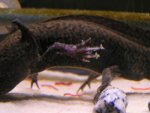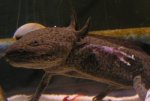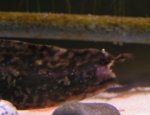newtsrfun
New member
- Joined
- Dec 19, 2004
- Messages
- 865
- Reaction score
- 3
- Points
- 0
- Age
- 42
- Location
- Portland, OR
- Country
- United States
- Display Name
- Jeff Altenburg
My 2 year olds made some huge mistake, and apparently took on one of their own, and for the first time, it was a rather huge attack, the worst I have ever seen. The poor guy had his foot mangled, and a rather large section of tail was ripped off. Normall I have seen the tail get munched, but never an arm and a tail, and never this bad.
I am not sure if the arm is broken, he won't use it, and it does not appear to be a compound fracture, no bone is visible. He may just not want to use it from tissue damage. The tail looks bad, but the the animal is in good health otherwise, so I assume as long as there is no infection, that will heal fine.
The arm, I am worried about. Who has had expierance with an actual broken bone? I have had numerous larvea bite limbs off before, and one or 2 times I had to amputate a limb that was beyond saving, and I have had a 100% success rate with all those procedures. however, I do not want to have to do that with an adult.
Any advice would be helpful, aside from salt baths and whatnot.
Thanks
I am not sure if the arm is broken, he won't use it, and it does not appear to be a compound fracture, no bone is visible. He may just not want to use it from tissue damage. The tail looks bad, but the the animal is in good health otherwise, so I assume as long as there is no infection, that will heal fine.
The arm, I am worried about. Who has had expierance with an actual broken bone? I have had numerous larvea bite limbs off before, and one or 2 times I had to amputate a limb that was beyond saving, and I have had a 100% success rate with all those procedures. however, I do not want to have to do that with an adult.
Any advice would be helpful, aside from salt baths and whatnot.
Thanks




 Axolotl Enthusiast
Axolotl Enthusiast